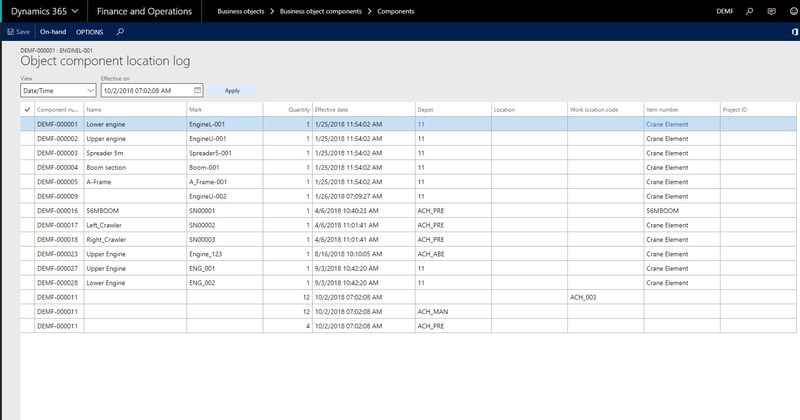Asset management is a wide term. Even asset as its own word is seen as a rather large concept and could refer to basically anything depending on a business. Moreover, asset could potentially relate to not one element, but is actually a structure multiple sub assets or components.
Asset structures
These asset structures are often the foundation of a business. When we refer to an asset, we do not mean a single piece of equipment, but rather multiple sub assets that form this piece of equipment. Maintaining structures could have varying reasons, for example it is as each sub asset – or component in DynaRent’s terminology – has its own maintenance cycle an aspect often seen in lifting services industry where a crane’s lower engine has a differing maintenance cycle based on running hours than its upper counterpart.

Image 1: component structure
Moreover, these component structures are set to ensure traceability. Businesses run into the hard task of tracking all the sub assets. However, building these component structures in DynaRent and relating them to a main asset (business object) allows users to easily trace the latest location of all components. DynaRent allows users to add lost components that are found or simply move components around between depots. Even when no relation exists to a business object.
Also structures tend to change relatively a lot. In other words, a specific piece within a component structure is not necessary for a particular job. The business detaches this part both physical as within the system so the location stays correct and any meter transactions are not incorrect. In short, these structures should be flexible and interchangeable between multiple business objects. Another aspect that DynaRent offers out of its box.

Image 2: component log
Aside from the functionalities on DynaRent’s components it also maintains a full view on its history. This includes maintenance and location logs as well as an overview of current and past component structures. Altogether this gives the necessary information for proper reporting and workspaces on this function’s elements. DynaRent’s asset component features and its user friendliness makes it the tool to deal with complex structures of sub assets and relating processes.
Book a demo to see how we can help you to streamline your asset management. In addition, we will show you how to reduce time and costs for your company. Download the fact sheet below to learn more about our DynaRent solution within the Dynamics 365 for Finance and Operations application including our Components function.





